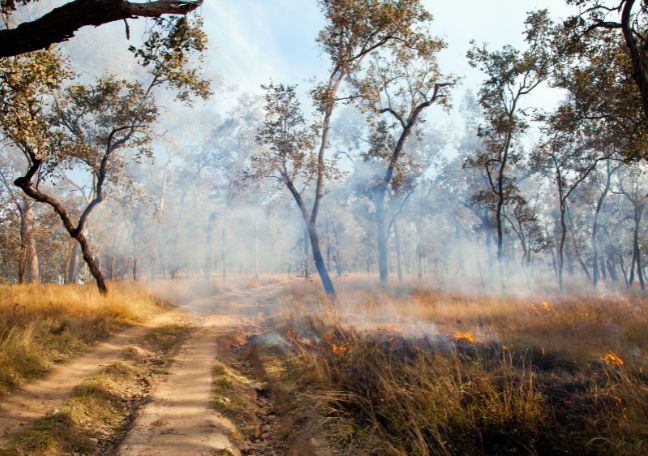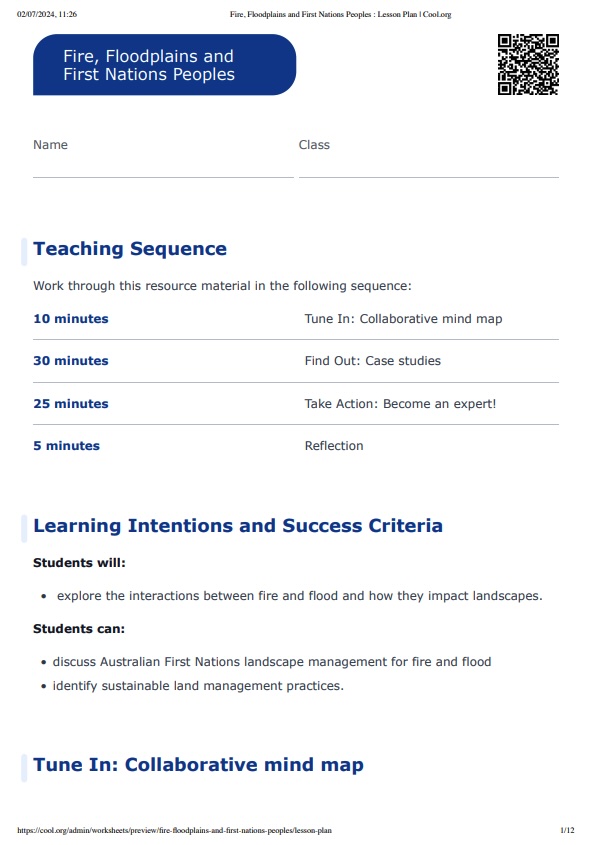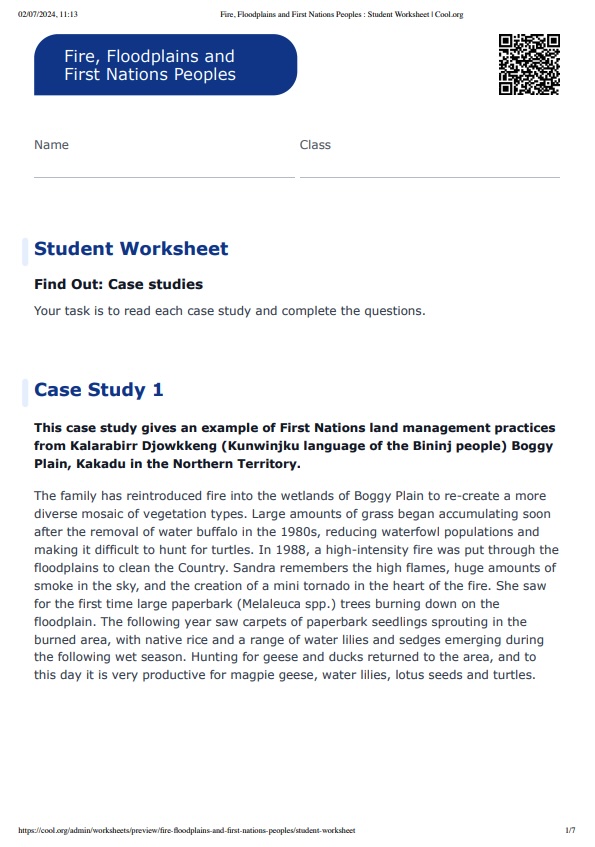Lesson summary
Students will understand the causes and effects of a change in an identified environment at a local, national or global scale. They will also identify strategies to support sustainability by critically analysing how Australian First Nations peoples use fire and flood for environmental management.
Learning intentions:
Students will...
- explore the interactions between fire and flood and how they impact landscapes.
Success criteria:
Students can...
- discuss Australian First Nations landscape management for fire and flood
- identify sustainable land management practices.
Lesson guides and printables
View Supporting Resources
Curriculum links
Select your curriculum from the options below.
Lesson details
Skills
This lesson is designed to build students’ competencies in the following skills:
- critical thinking
- collaboration
- communication
- ethical understanding
- intercultural understanding
Curriculum Mapping
Australian Curriculum (v9.0) content description:
Year 10 Geography
- Causes and effects of a change in an identified environment at a local, national or global scale, and strategies to manage sustainability (AC9HG10K04).
Relevant parts of Year 10 achievement standards: By the end of Year 10, students explain the effects of human activity on environments, and the effect of environments on human activity, over time. They evaluate the implications of a distribution. They evaluate the extent of interconnections occurring between people and places and environments. They analyse changes that result from these interconnections and their consequences.
NSW Syllabus outcomes:
- GE5-5: Assesses management strategies for places and environments for their sustainability
General capabilities: Critical and Creative Thinking, Ethical Understanding, Intercultural Understanding
Cross-curriculum priority: Aboriginal and Torres Strait Islander Histories and Cultures, Sustainability
Level of teacher scaffolding: Medium - Facilitate class discussion and guide students in critical analyses of excerpts from academic journals.
UN Sustainable Development Goals
- Target 15.1: By 2020, ensure the conservation, restoration and sustainable use of terrestrial and inland freshwater ecosystems and their services, in particular forests, wetlands, mountains and drylands, in line with obligations under international agreements.
- Target 15.5: Take urgent and significant action to reduce the degradation of natural habits, halt the loss of biodiversity and, by 2020, protect and prevent the extinction of threatened species.
Resources Required
- Devices for students to access online resources for research
- Student Worksheet
- Whiteboard
- Whiteboard markers
Additional Info
We would like to acknowledge and express our gratitude for the expertise and advice provided in the creation process of these resources from the following parties:
- The Australian Institute for Disaster Resilience (AIDR)
- Bhiamie Williamson (Monash University)
Related Professional Learning
Teach Indigenous land Management Using Fire - Secondary
Quick Summary: This course will help you learn about how John Daly uses fire stick techniques to care for Country, to reduce the impact of bushfires and protect communities.






Welcome back!
Don't have an account yet?
Log in with:
Create your free Cool.org account.
Many of our resources are free, with an option to upgrade to Cool+ for premium content.
Already have an account?
Sign up with:
By signing up you accept Cool.org's Terms and Conditions(Opens in new tab) and Privacy Policy(Opens in new tab).